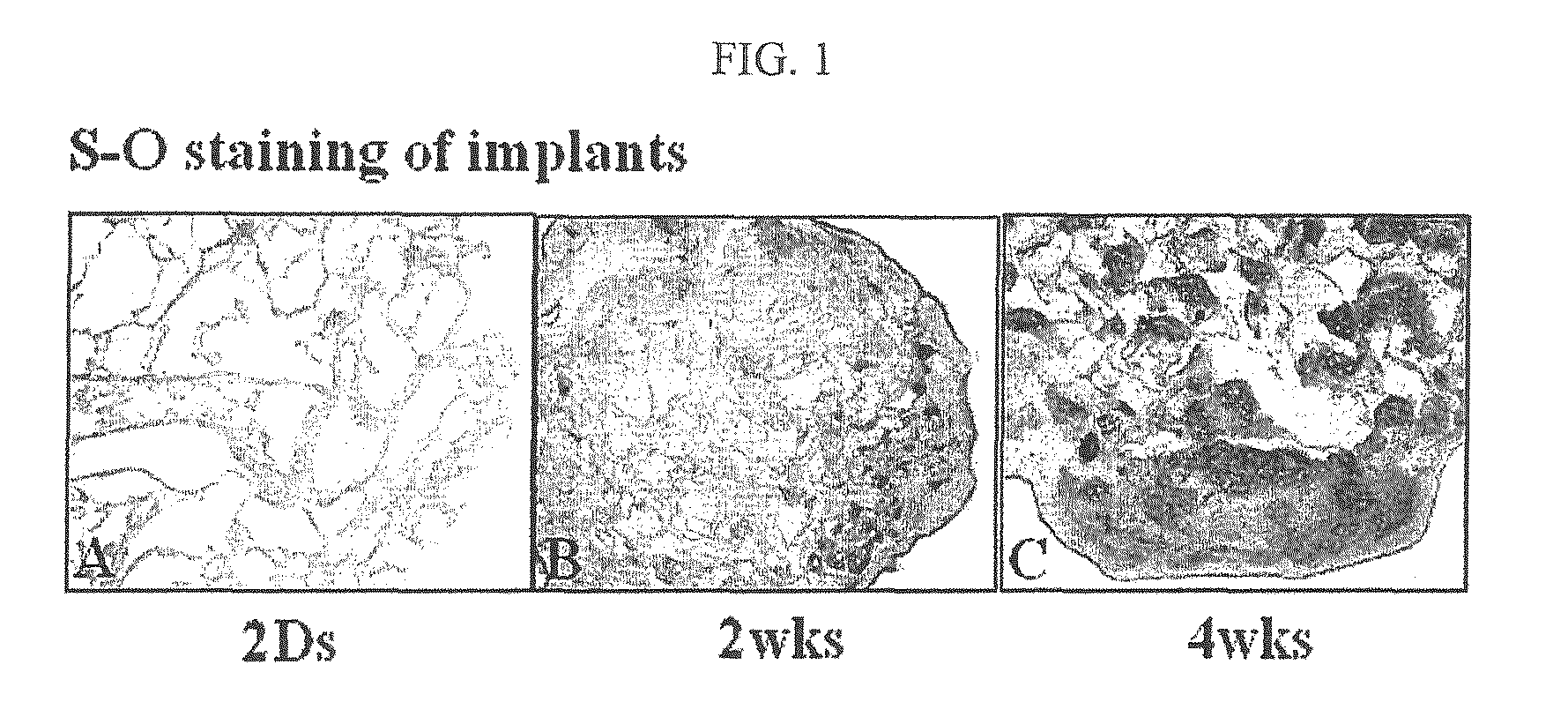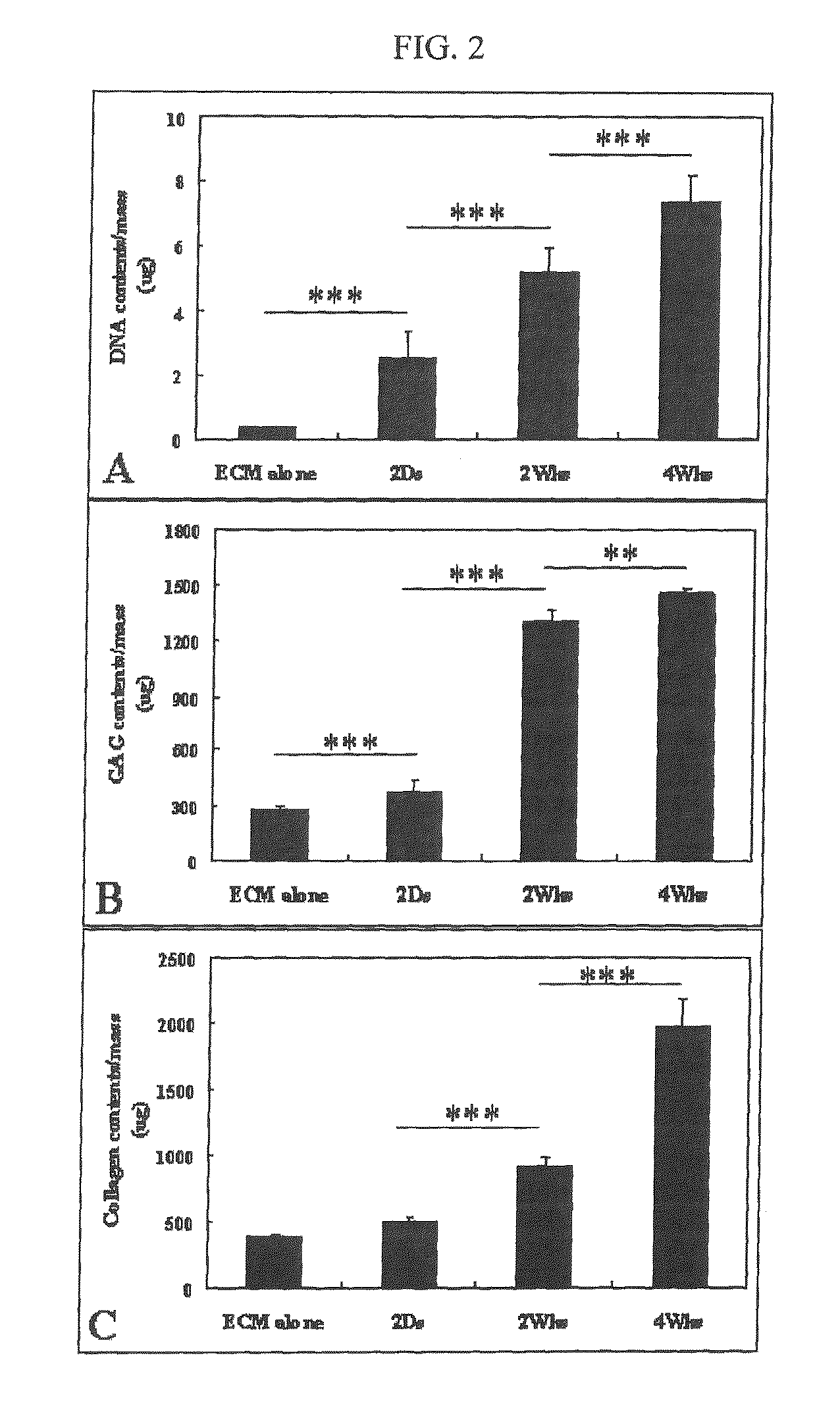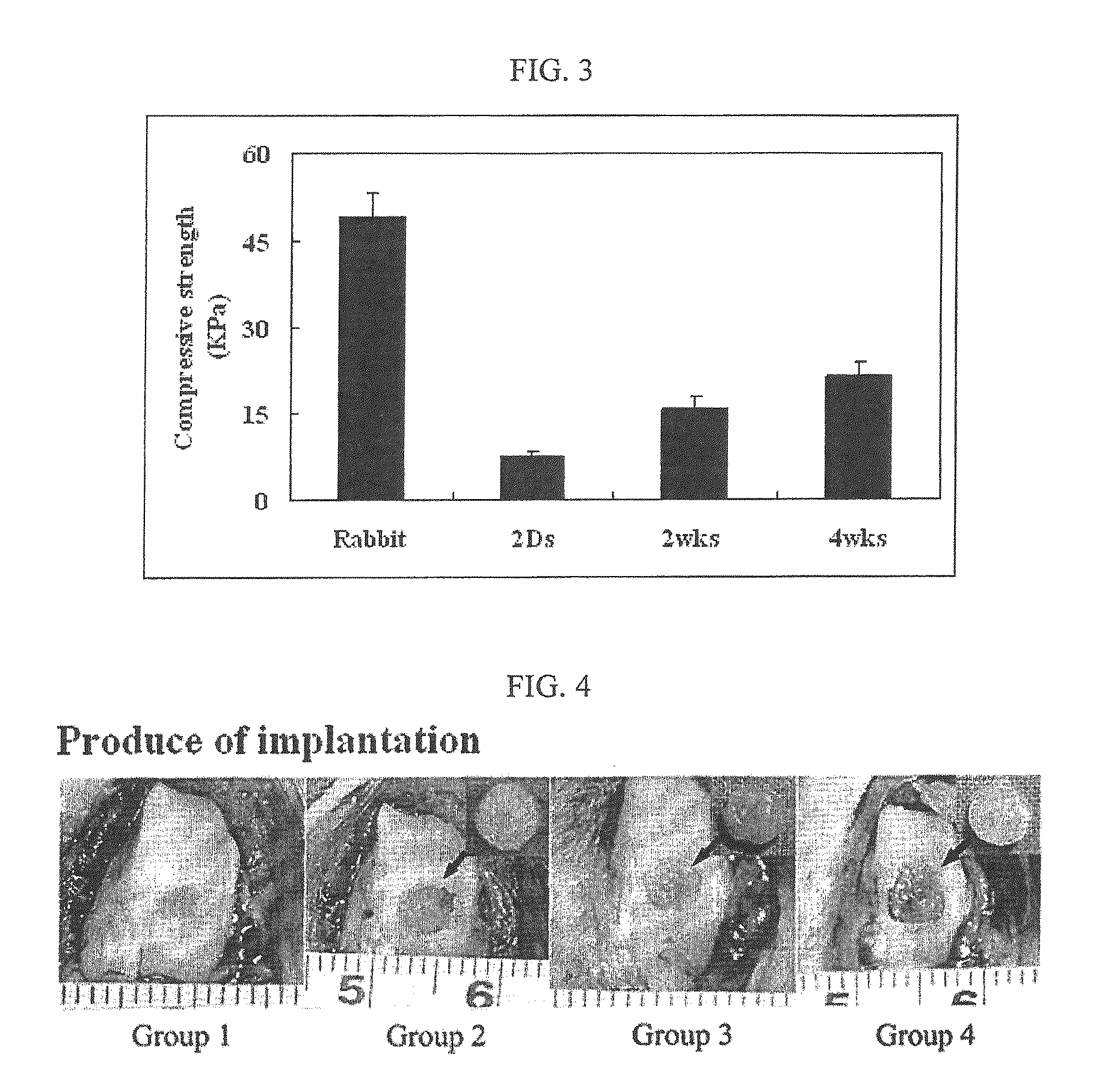Therapeutic composite for cartilage disorder using extracellular matrix (ECM) scaffold
a technology of extracellular matrix and composite, which is applied in the direction of skeletal/connective tissue cells, prosthesis, peptide/protein ingredients, etc., can solve the problems of fibrocartilage which lacks the biomechanical characteristics of normal articular cartilage, cannot produce high-quality tissue engineered cartilage to be used in clinical practice, and oa. large problem
- Summary
- Abstract
- Description
- Claims
- Application Information
AI Technical Summary
Benefits of technology
Problems solved by technology
Method used
Image
Examples
example 1
Construction of Cell-Derived ECM Scaffold
[0046]A cell-derived ECM scaffold was constructed using chondrocytes isolated from knee joints of 2 to 4-week-old pigs.
[0047]After culturing pig chondrocytes for 3˜4 days, cell layers having ECM components, were carefully separated, and transformed into a pellet-type construct through centrifugation. The pellet-type structure was adjusted for 3 weeks for the growth of new cartilage tissue, after repetition of freeze-thawing 3 times every 12 hours, ECM was obtained by freeze-drying at −56° C. for 48 hours at a pressure of 5mTorr.
[0048]The constructed ECM was decellularized through a step of removing nuclear and cytoplasmic components by treating it with a proteolytic enzyme, detergent or ultrasound. 0.05% trypsin was used as a proteolytic enzyme and ionic and non-ionic detergents such as SDS, triton X, deoxycholate were used as a detergent. Nuclear components, such as DNA, etc. were removed by treating it with DNase.
[0049]The final decellulari...
example 2
Construction of Tissue-Engineered Cartilage Using Rabbit Chondrocytes and ECM Scaffold
[0050]The cell-derived ECM scaffold constructed in Example 1 was socked in 70% ethanol for 1 hour to wash with PBS several times, and left to stand overnight in DMEM medium without serum before inoculating cells. Chondrocytes were isolated from a 2 week-old New Zealand white rabbit and cells at passage 1 were inoculated into the ECM scaffold at a concentration of 3×106 cells / ml for 1.5 hours. The ECM scaffold inoculated with chondrocytes was cultured in a 6-well plate for 2 days, 2 weeks and 4 weeks, before transplantation.
example 3
Maturity Measurement of Transplant In Vitro
3-1: Histological and Immunohistochemical Analysis
[0051]The cultured ECM scaffold containing chondrocytes, constructed in Example 2, was fixed in 4% formalin fixative solution for 24 hours. Then, the sample was embedded in paraffin, sectioned into a thickness of 4 μm, and stained with safranin-O. As a result, it was observed that accumulation of sulfated proteoglycan was increased gradually with time, which filled the pores of the scaffold (FIG. 1).
[0052]For chemical analysis, the transplant (the cultured ECM scaffold containing chondrocytes) was decomposed with a papain solution (125 μg / ml of papain, 5 mM of L-cystein, 100 mM of Na2HPO4, 5 mM of EDTA, pH 6.4) at 60° C. for 24 hours and centrifuged at 12,000 g for 10 minutes. For the measurement of total GAG (glycosaminoglycan) content, culture supernatant was analyzed using DMB assay (1,9-dimethylmethylene blue). Each sample was mixed with DMB solution to measure the absorbance at 225 nm. ...
PUM
| Property | Measurement | Unit |
|---|---|---|
| Temperature | aaaaa | aaaaa |
| Time | aaaaa | aaaaa |
| Time | aaaaa | aaaaa |
Abstract
Description
Claims
Application Information
 Login to View More
Login to View More - R&D
- Intellectual Property
- Life Sciences
- Materials
- Tech Scout
- Unparalleled Data Quality
- Higher Quality Content
- 60% Fewer Hallucinations
Browse by: Latest US Patents, China's latest patents, Technical Efficacy Thesaurus, Application Domain, Technology Topic, Popular Technical Reports.
© 2025 PatSnap. All rights reserved.Legal|Privacy policy|Modern Slavery Act Transparency Statement|Sitemap|About US| Contact US: help@patsnap.com



